The cabbage vegetable is a leafy green that belongs to the Brassica family. It is an annual plant and grows best in cool weather. Cabbage can be grown in spring and fall and harvested within 60 days of planting. There are many types of cabbage, including green, red, and savoy. However, the most common type of cabbage in the United States is green. Cabbage is a low-calorie food that is high in fiber and antioxidants.
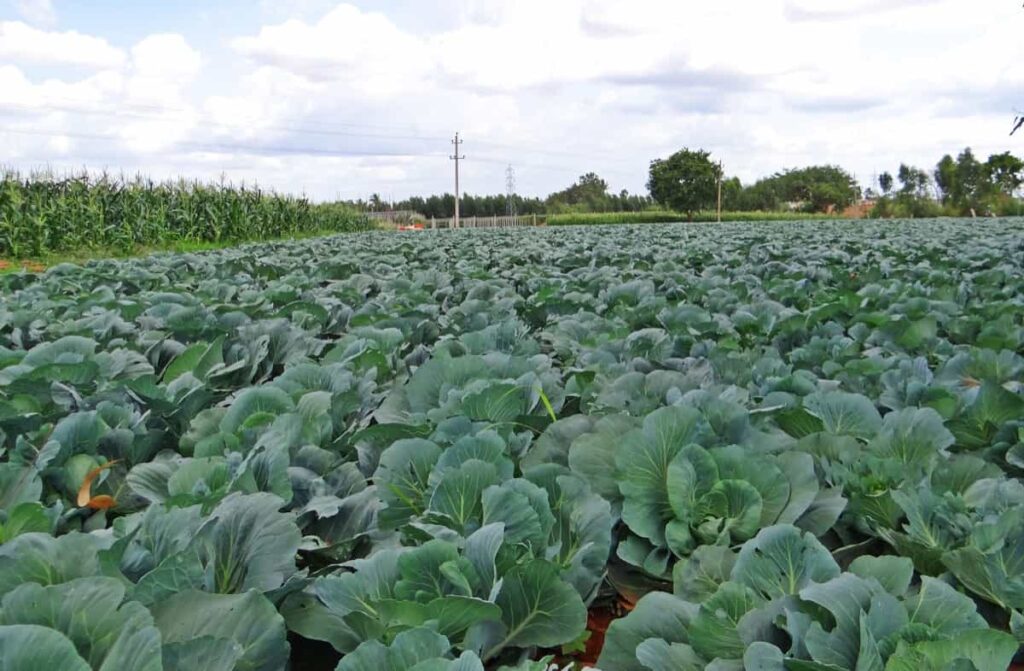
As a result, it has many health benefits, including reduced cancer risk and heart disease. Cabbage farming requires little investment and can be done on a small scale. However, there are certain things to consider before starting a cabbage farm, such as climate, soil type, and water availability. In addition, cabbage farmers need to have a market for their produce to be successful. Wholesale markets, community-supported agriculture (CSA) programs, and farmer’s markets are all possible outlets for selling cabbage.
Cabbage farming business plan
Advantages of cabbage farming business
Cabbage is a highly versatile crop that can be grown in various climates and soil types. It is also relatively easy to care for, making it an ideal crop for small-scale farmers. Cabbage is a highly nutritious vegetable, providing a good source of vitamins C and K and dietary fiber. It can be eaten fresh, cooked, or pickled, making it a versatile addition to any diet.
Cabbage farming can be a very profitable business venture, mainly if you can sell your crops directly to consumers. Farmers’ markets and roadside stands are great places to sell cabbage, vegetables, and fruits. Your cabbage farm could become a thriving business with proper planning and marketing.
How to prepare the soil for cabbage
The first and foremost step in preparing the soil for cabbage is to test the pH level. The ideal pH level for cabbage is between 6.0 and 7.0. If the soil pH level is too high or too low, it can affect the growth of the cabbage. Next, you will need to add organic matter to the soil. This can be done by adding compost or manure to the soil.
You will need to add a layer of mulch to help retain moisture and keep the weeds down. Once you have prepared the soil, you will need to loosen it up so that the cabbage roots can spread easily. You can do this by using a hand tiller or rototiller. After you have loosened up the soil, you will need to ensure it is evenly moistened before planting the cabbage seeds.
Climate requirement for cabbage farming
Cabbage is a cool-weather crop that requires a long, frost-free growing season. In the northern hemisphere, cabbage is typically planted in early spring and harvested in late summer or early fall. In the southern hemisphere, cabbage is usually planted in late summer or early fall and harvested in early spring. Cabbages are very sensitive to temperature changes and prefer a steady, cool climate with temperatures between 60-70°F (15-21°C).
In case you missed it: Carrot Farming Business Plan: How to Grow from Seed to Harvest
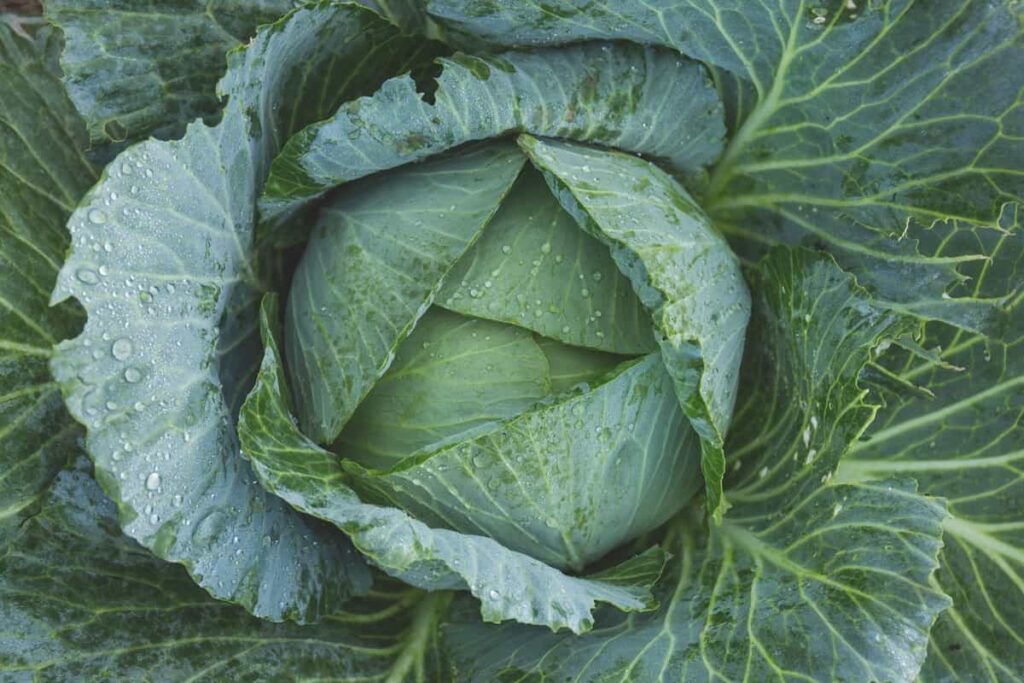
They will bolt (go to seed) if exposed to extended periods of warm weather. Cabbage plants are also quite tolerant of frost and can withstand snowfall. Ideally, cabbage plants should be grown in full sun but can also tolerate partial shade. They need rich, well-drained soil with a pH level between 6.0 and 7.0.
Best time to plant cabbage
The best time to plant cabbage is typically in the spring, around 2 to 3 months before your area’s average last frost date. However, you can also plant cabbage in the fall, around 6 to 8 weeks before the first frost date. Cabbage is a cool-weather crop that does not do well in hot summer temperatures.
Cabbage verities
Cabbage is a cool-season crop that can be grown in various climates. There are many types of cabbage, including green, red, and Savoy varieties. Green cabbage is the most common type in the United States. It has a crisp texture and a mild flavor. Red cabbage is similar in taste and texture when compared to green cabbage but has a deep red color. Savoy cabbage is a type of cabbage that has crinkly leaves and a slightly bitter flavor.
Cabbage can be grown in warm and cool climates but prefers cooler temperatures. In the United States, cabbage is typically planted in late winter or early spring and harvested in late spring or early summer. Cabbage can be direct-seeded or transplanted into the garden. When transplanting, it is important to space the plants 18-24 inches apart, so they have room to grow. Cabbage does best in moist, well-drained soils with a pH of 6.0-7.0.
How to choose the suitable variety of cabbage
Cabbage is a leafy vegetable, and wide varieties of cabbage are available in the market. So, how do you choose a suitable variety for your cabbage farming business? Here are a couple of tips that will help you choose the suitable cabbage variety for your farm:
- Consider the climate conditions in your area: Different varieties of cabbage thrive in different climatic conditions. Hence, it is important to choose a variety that can grow well in the climate conditions prevalent in your area.
- Consider the soil type in your farm: Different varieties of cabbage have different requirements as far as soil type is concerned. Choose a variety that can grow well in the type of soil present on your farm.
- Consider the purpose for which you are growing cabbage: Are you growing cabbage for commercial purposes or home consumption? Depending on this, choose a variety that will yield good results (in terms of quantity and quality) for the purpose you have in mind.
- Research: Before finalizing on a particular variety, research it. Talk to other farmers already growing that particular variety and get their feedback. This will help you understand its pros and cons and whether it will suit your farm.
How to propagate cabbage
Cabbage can be propagated by seed, division, or cuttings. Start seeds indoors 6 to 8 weeks before the last frost date to propagate by seed. Sow seeds ½ inch deep in moistened, sterile potting mix. Keep the soil temperature at 65-75°F and provide plenty of light. Thin the cabbage seedlings to 4 inches apart when they are 2-4 inches tall. Harden off seedlings for 10 to 14 days before transplanting them outdoors.
In case you missed it: Shrimp Farming Business Plan: Every Aqua Farmer Should Know Before Getting Started
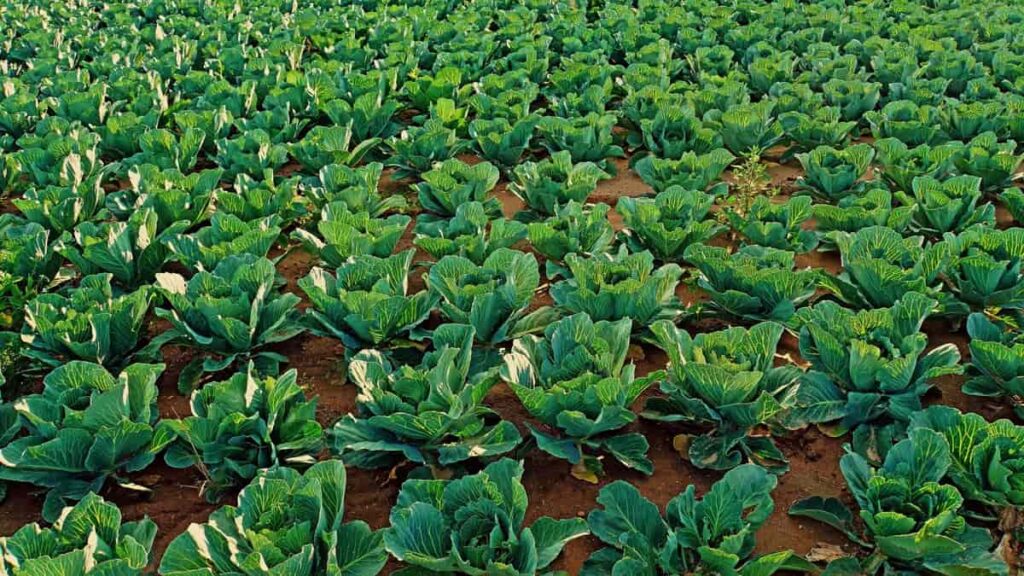
Dig up an established plant early spring or fall to propagate by division. Pull the plant into 2-3 sections, ensuring each has a good root system. Replant sections immediately and water well.
To propagate by cuttings:
- Take 4-6 inch stem cuttings from an established plant in early spring or summer.
- Remove the cabbage bottom leaves and dip the cut end in the rooting hormone powder.
- Plant the cutting in moistened, sterile potting mix and keep the soil temperature at 65-75°F.
- Provide plenty of light and keep the soil moist but not soggy until roots have developed (usually 30 to 45 days).
Cabbage seed rate per acre
The cabbage seed rate per acre is a crucial factor in cabbage production. This rate determines how many seeds are needed per acre to produce a successful crop. The cabbage seed rate will vary depending on the cabbage variety, soil type, and climate. A rule of thumb is to use 1-2 pounds of seeds per acre, but it is always best to consult a professional before planting.
Where to purchase cabbage seeds
There are couple of places where you can purchase cabbage seeds. You can find them online at your local nursery, and garden center. If you are looking for a specific variety of cabbage seed, you should search for it online. There are many different types of cabbage seeds available, so you can easily find what you are looking for.
You can also purchase cabbage seeds in bulk online. This is an excellent option if you plan on growing a large amount of cabbage. Ask your horticulture department if you need help determining where to purchase cabbage seeds. They will be able to give you information on where to find them in your area.
Cabbage seed sowing
To start cabbage farming, you must purchase quality seeds from a reputable supplier. When sowing the seeds, it is important to do so at the correct depth and spacing to give the seedlings the best chance of growing into healthy plants. Once the cabbage seeds have been sown, they should be kept well-watered and protected from frost until they germinate.
Once the seedlings have emerged, they need to be thinned out so that only the strongest plants can grow on them. The thinned-out seedlings can be transplanted to other areas or sold as microgreens. As the plants grow, they must be monitored for pests and diseases and treated accordingly. Harvesting can begin when the heads of cabbage are firm and tight.
Mulching your cabbage plants
Mulching your cabbage plants is one of the most important aspects of growing this cruciferous vegetable. Not only does it help to retain moisture in the soil, but it also protects the plants from extreme temperatures and keeps the weeds at bay. There are couple of materials that can be used for mulch, but one of the best options is straw.
In case you missed it: Bamboo Farming Business Plan: How Bamboo Could be the Next Eco-Friendly Business
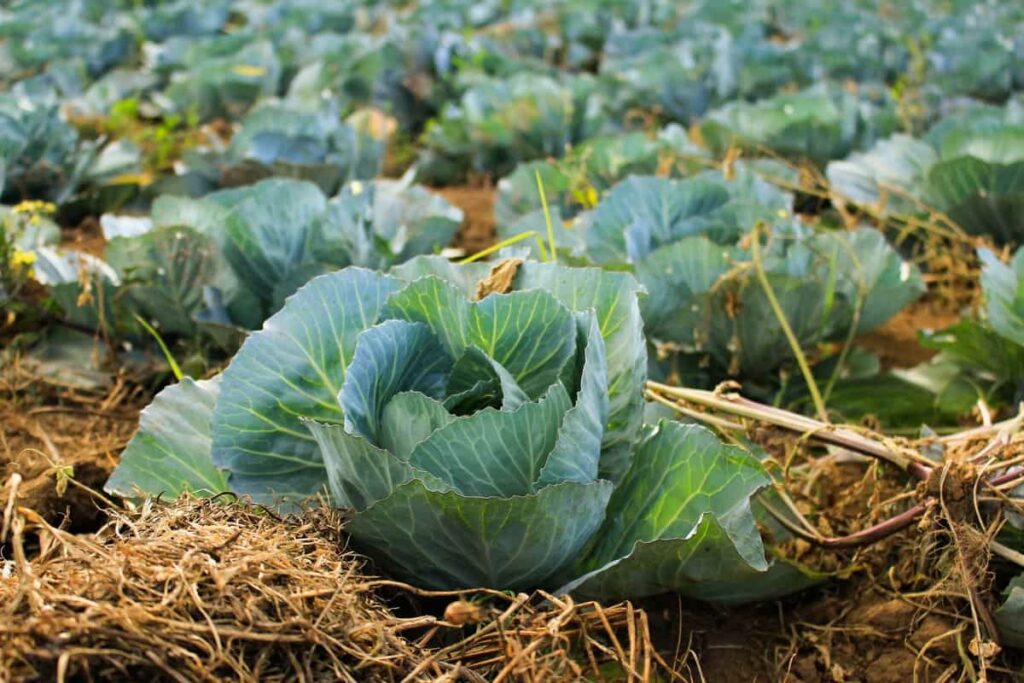
Straw is an excellent mulching material for cabbage plants because it is light and airy, which allows for good drainage and aeration around the roots. It also breaks down slowly over time, releasing nutrients into the soil. Plus, it’s an affordable option for farmers on a budget. Another popular mulching material for cabbage plants is plastic sheeting. This offers more protection from extreme temperatures than straw but allows for less drainage and aeration.
Unfortunately, it’s also more expensive than straw, so it’s not always the best option for farmers on a budget. No matter what mulch you choose, apply it around the base of the plant, being careful not to pile it too high and smother the stem. Next, apply a thick layer (about 4 inches) around each plant, and refresh it regularly throughout the growing season.
Cabbage transplanting and spacing
Cabbage is typically transplanted in late spring or early summer after the last frost has passed. The cabbage plants should be spaced 18-24 inches apart in rows 2-3 feet apart. Mulching around the cabbage plants will help retain moisture and keep the soil cool, which is important for preventing bolting (premature flowering).
In case you missed it: Terrace Gardening ideas for Home in India: For Vegetables, Fruits, Flowers, and Herbs
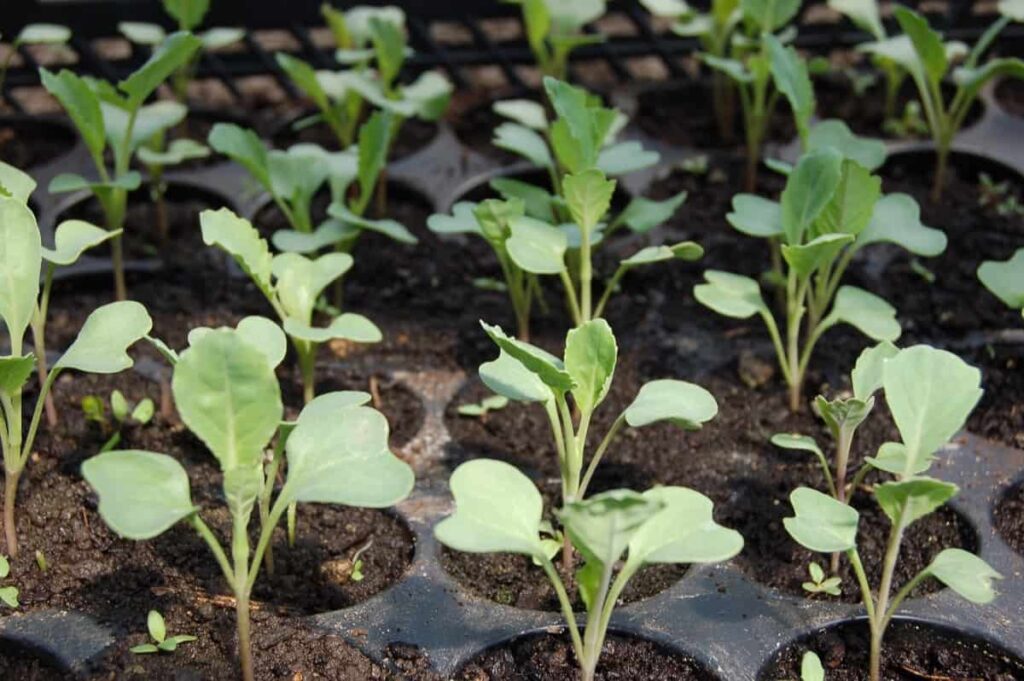
How to thin your cabbage plants
If your cabbage plants get too close together, you’ll need to thin them out. Here’s how:
- Wait until the plants are about 4 inches tall.
- Using a sharp knife or gardening shears, cut off the excess plants at the base of the stem.
- Be sure to leave only the healthiest, strongest plants.
Thinning your cabbage plants is an important step in ensuring a successful harvest. Doing this will give each plant room to grow and thrive.
How to care for cabbage plants
Cabbage plants are easy to care for and can be grown in various climates. Here are a few tips, ideas on how to care for your cabbage plants:
- Water cabbage plants regularly, making sure to keep the leaves dry. Too much moisture can cause the leaves to rot.
- Fertilize cabbage plants every two weeks with a high-nitrogen fertilizer.
- Harvest cabbage when the heads are firm and solid. Cut the heads off at the base of the plant, being careful not to damage the roots.
Best Fertilizers for your cabbage plants
Cabbage is a cool-weather crop best planted in the spring or fall. Cabbage prefers rich, well-drained soil with a pH of 6.0 to 7.0. Before planting, apply compost or other organic matter into the soil to improve its fertility and structure. In general, fertilizers can be categorized into two groups: inorganic and organic. Inorganic fertilizers are made from minerals and chemicals, including synthetic (man-made) nitrogen fertilizers, phosphate rock, and limestone.
Organic fertilizers come from living things and include manure, compost, earthworms, bat guano, and kelp meal. There are many different types of inorganic fertilizers available on the market today. The most common type is synthetic nitrogen fertilizer, which is made from ammonia gas and oxygen gas. This type of fertilizer is very high in nitrogen and can be very helpful in promoting leafy growth in cabbage plants.
However, carefully using this type of fertilizer is important, as too much nitrogen can damage the plant’s roots and leaves. Phosphate rock is another common type of inorganic fertilizer. This type of fertilizer is mined from deposits of phosphate minerals formed over millions of years by decomposing plant and animal remains. Phosphate rock contains high levels of phosphorus.
Compost requirement for cabbage plants
Compost is essential for cabbage plants because it helps to improve drainage and aeration in the soil while also providing nutrients for the plants. It is important to use a high-quality compost low in salts and other minerals. The ideal pH range for cabbage plants is 6.0 to 7.0, so adjust your compost accordingly.
When and how to water cabbage plants
Cabbage plants must be watered regularly, especially during the hot summer. Water them in the morning, so the leaves have time to dry before nightfall. How often you need water depends on the weather and soil type. A rule of thumb is to water when the top inch of soil is dry. If using a sprinkler system, ensure to water evenly and avoid wetting the leaves too much, as this can lead to fungal diseases.
Hand-watering with a watering can is also an option and can help prevent disease by keeping the leaves dry. When watering cabbage plants, always use lukewarm water to avoid shocking the roots.
How to control weeds in cabbage
Weed control is vital for any cabbage farming operation. Weeds compete with crops for space, water, and nutrients and can harbor pests and diseases. Therefore, an effective weed management program should focus on preventing weeds from establishing in the first place. This can be done by starting with clean seedbeds, mulch, or cover crops and practicing crop rotation.
In case you missed it: How to Grow Medicinal Plants at Home: in Pots, Terraces, and Backyard
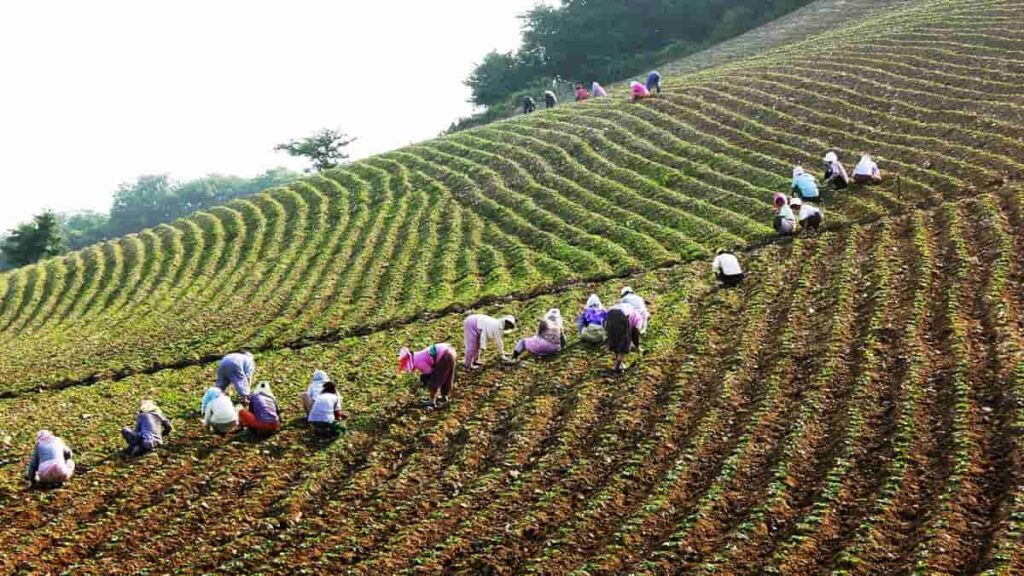
Once weeds are established, they can be controlled through cultural methods such as hand-weeding, mowing, or flaming; or mechanical methods such as tillage or herbicide application. The best method of weed control will vary depending weed type, the time of year, and the stage of crop development. However, with careful planning and execution, an effective weed management program will help keep your cabbage farm productive and profitable.
Cabbage Pests, diseases, and control
Cabbage is a cool-season crop that is susceptible to several pests and diseases. The most common cabbage pests are caterpillars, aphids, slugs, and whiteflies. Caterpillars can be controlled with Bacillus thuringiensis (BT) or by handpicking. Aphids can be controlled with insecticidal soap or ladybugs. Slugs can be controlled with baits or traps. Whiteflies can be controlled with yellow sticky traps.
Diseases of cabbage include black rot, white mold, and downy mildew. Black rot can be controlled with fungicides such as chlorothalonil or mancozeb. White mold can be controlled with fungicides such as benomyl or thiabendazole. Downy mildew can be controlled with fungicides such as mancozeb or metiram. However, you better consult the local horticulture department for the right solution depending on the symptoms of cabbage diseases and pests.
When and how to harvest cabbages
Knowing when and how to harvest your cabbages to maximize your yield is important. The first step is to determine when your cabbage is ready to harvest. This can be done by checking the size and firmness of the head. Once you have determined that your cabbage is ready to harvest, you will need to cut the stem about 2 inches below the head.
After cutting the stem, you will need to remove the outer leaves of the cabbage. These leaves can be used for compost or mulch. Once you have removed the outer leaves, you must wash your cabbage heads in cool water. After washing, your cabbage heads are ready to be stored or eaten! If you plan to store your cabbage, you must keep them in a cool, dark place. Cabbage can last for several weeks when stored properly.
Cabbage yield per acre
Cabbage yield per acre varies depending on the type of cabbage, growing conditions, and other factors. For example, the average yield for Savoy cabbage is about 25-35 tonnes per hectare, while the average yield for white cabbage is approximately 45-50 tonnes per hectare. Yields can be increased with good management practices such as irrigation, fertilization, and pest control.
How to market your cabbage
Assuming you have a cabbage farm and want to market your business, there are multiple ways you can do this. One way is to set up a website or blog and write articles about cabbage farming, your farm, and how to cook and eat cabbage. You can also distribute flyers and brochures in local supermarkets and farmer’s markets. You can hold events such as cooking demonstrations or contests at local fairs. You can give presentations to school groups or community organizations. You can even write a cookbook featuring cabbage recipes!
Conclusion
If you’re considering starting a cabbage farming business, you’ll need a solid business plan. This article has outlined what you should include in your cabbage farming business plan, from the initial start-up costs to the ongoing expenses. However, a cabbage farming business can be successful and rewarding with careful planning and execution.
- Profitable Village Farming Business Ideas in 2024
- High-Yield Aquaculture: Fast-Growing Fish for Farming
- Effective Fish Pond Construction Techniques for Beginners
- Irrigation and Water Management in Pineapple Farming
- Blossom to Harvest: Mastering Flowering and Pollination in Papaya Farming
- Pig Fattening Essentials: From Selection to Sale for Beginners
- Raising Wagyu Cattle: A Complete Guide for Premium Beef Production
- Soil Types and Their Water Holding Capacity
- Optimizing Irrigation Schedules for Coconut Groves for Enhanced Yield
- Espresso Your Garden: Coffee Grounds for Healthier Acid-Loving Plants
- The Best Soil Mix for Snake Plants: How to Mix Your Own Snake Plant Soil
- Green Thumb Success: Expert Tips for Cultivating Greenhouse Beans All Year Round
- Bloom All Year Round: The Ultimate Guide to Indoor Hyacinth Care
- Eco-Friendly Gardening: How to Make Liquid Fertilizer from Kitchen Waste
- Ultimate Guide to Grow Anise in Pots: Explore Seed Propagation to Harvesting
- Guide to Raising Chester White Pigs: Discover Breed Facts to Growth Management
- Mastering the Elegance: The Ultimate Guide to Weeping Cherry Tree Care, Planting, and Maintenance
- Ultimate Guide to Planting Garlic in Grow Bags: Growing Strategies for Beginners
- How to Fix Spider Plant Leaf-Related Problems: Natural and Organic Remedies
- 10 Reasons Why Your Tulsi Plant is Shedding Leaves: Home Remedies and Solutions
- Optimizing Growth and Yield: The Advantages of Palm Bunch Ash Fertilizer
- Utilizing Neem Oil Extract as a Natural Pesticide for Hydrangea
- From Soil to Harvest: Various Ways in Which Farmers Can Use AI Tools
- Steps to Encourage and Induce Citrus Flowers: A Comprehensive Guide
- How to Fix Snake Plant Leaf-Related Issues: Natural and Organic Remedies
- Transform Your Garden into a Fragrant Oasis with Raat Ki Rani (Night Blooming Jasmine)
- Discover the Ideal Chicken Breeds for Philippine Farms
- How to Create a Poultry Egg Farm Business Plan for Profits
- Grow Lemon Cucumbers Like a Pro: Insider Techniques for Bountiful Yields
- Ultimate Guide to Caring for Your Pink Princess Philodendron: Tips for Thriving Variegation
- Areca Nut Profit Per Acre: Calculating Yield and Cost of Cultivation
- How Kaveri Chicken is Becoming a More Profitable Breed in Indian Backyards
- Transform Your Barn: 9 Steps to Convert a Horse Stall into a Chicken Coop
- Exploring Suffolk Sheep Disadvantages with Limitations and Challenges
- Guide to Solving Potted Lemon Tree Problems: How to Revive Lemon Tree in Containers
- Steps to Encourage Female Pumpkin Flowers: Best Strategies for More Flowers and High Yields
